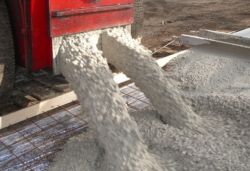In the first gas concrete was received in 1889 by the Czech chemist Goffman. As a gas generator, he used acid solutions. Goffman's idea of cellular concrete was developed by the Americans Aulsworth and Dyer. As a gas generator in 1914, they used in admixture of impurities of aluminum and zinc powders. During the chemical reaction of these powders with hydrated lime, hydrogen was released, which also contributed to the formation of a porous structure of concrete. This invention has proved so significant that it is still considered the starting point of the technology of manufacturing gas concrete.
The production of cellular concrete in the USSR began to develop actively in the 1930s. Autoclave cellular aerated concrete (AAB) with gas porosity appeared on an industrial scale by the 1950s. By the 1960s, the production of gas concrete (AYB) had become an independent scientific direction, largely ahead of the world's developments in this field.
By the end of the 1980s, more than 250 million square meters of buildings for various purposes had been built from cellular concrete in the USSR. At the same time, despite the high level of domestic scientific developments, the West European achievements (reducing the density of panels and blocks of concrete up to 300 kg / m³), based primarily on stable raw materials and equipment providing high Homogeneity of the material for the manufacture of concrete products.
By 2011, the total output of gas concrete in Russia amounted to more than 3.2 million m3 / year, the number of factories producing such concrete is more than 80, and by 2015 another 10 are planned to be launched. The largest and modern enterprises for the production of gas concrete in Russia , Mainly built in the 2000s.
Каталог
Concrete - The history of the appearance and production of cellular concrete
Технические характеристики





